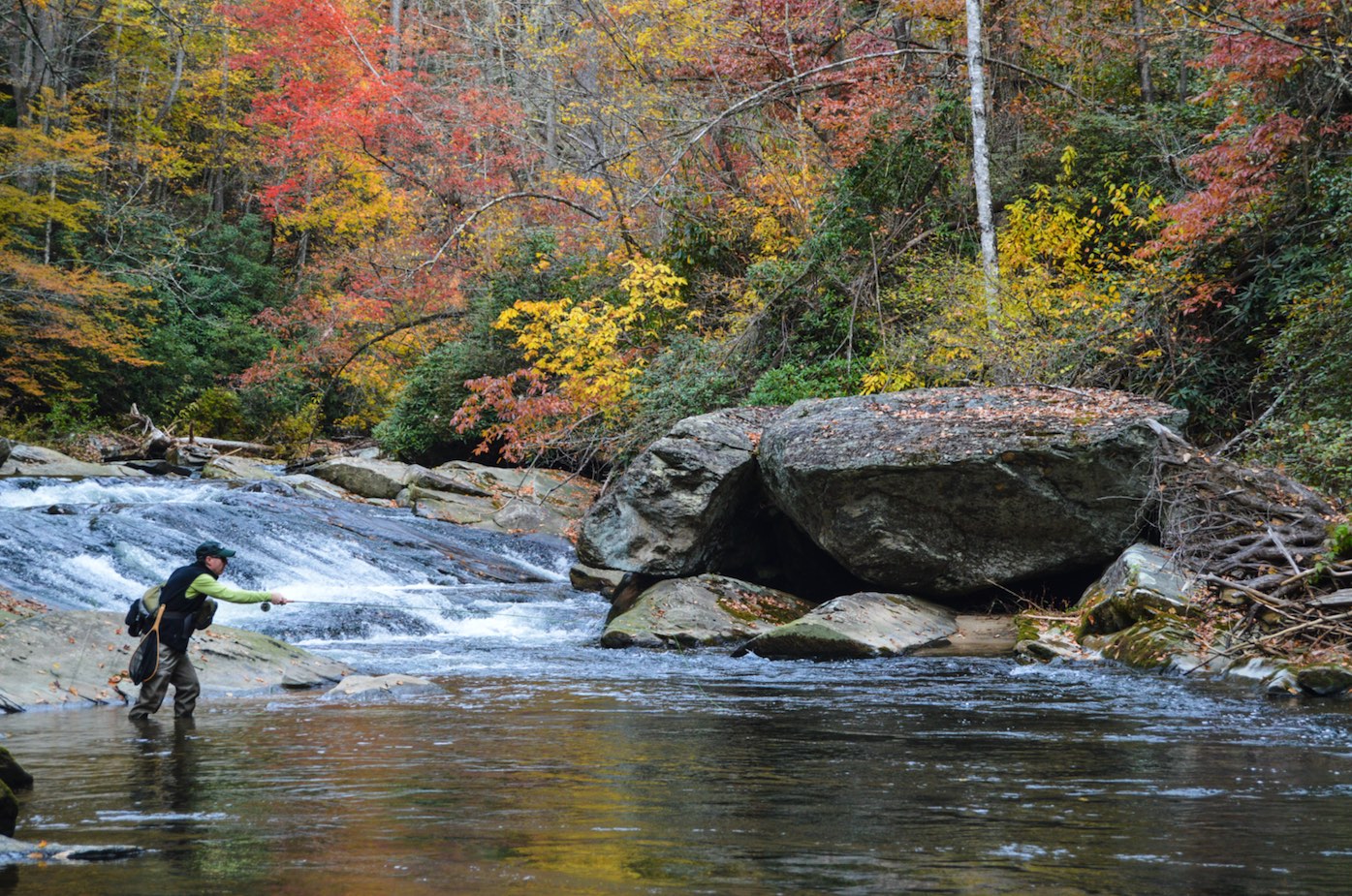Fly fishing is an endless series of learning curves. As soon as I mastered one concept, another emerged. So it was nearly 30 years ago for me in Virginia’s Shenandoah Valley. I cracked the code of small streams and spring creeks. At the wise old age of 28, I thought I had it all figured out.
Then one spring day, I fished the Jackson River with a friend of mine and long-rod mentor, Billy Kingsley. I remember staring at the rush of water for a good 10 minutes and wondering one single thing:
Where the hell are the fish? As it turned out, Billy caught dozens of fish; I never felt a single tug.
Needless to say, big water can be intimidating. With so much to cover, where do you start?
Decades later, I’m still no expert on fly fishing rivers, but here are a few tips to focus on:
Safety First
You need good boots. Don’t go cheap. Find a comfortable pair that fit with good traction and support. Your ankles and knees will thank you.
Good footwear is a start, but it never hurts to have a wading staff. Depending on the size of the river, the force of the current can be deceivingly strong. I got bowled over the first time I fished out West when I was in charge of cleaning the camp dishes after dinner. All it took was one ill-advised step toward the middle and down I went.
Moral of the story: Go slow and be careful.
Think Small
When many newcomers first fish bigger water, it all looks the same, but it’s not. Rivers are merely a bigger version of small streams with a series of pools, riffles and runs. Identify one of those sections of water, preferably one that you’re comfortable with, and fish it.
Make sure to slow down. Fish each piece of water thoroughly. With small streams, you can cherry pick quickly. Rivers, because of their sheer scope, take more of a commitment. Imagine you’re working on a puzzle. Probe each section of water one by one each trip. After a few outings, you’ll have a much better clearer roadmap to the productive water.
Use a Drift Boat
When I learned to fish in the Southeast in the late ‘80s and early ‘90s, drift boats weren’t in vogue. Almost everyone waded. It wasn’t until I spent a summer out West that I learned how to fish out of — and row — a Clackacraft.
I wished I had had one sooner.
Drifting a river allows you to evaluate water from a macro perspective – from start to finish — depending on how much river you cover. And let’s not forget the obvious: You can cover a lot more potential spots drifting than you can on foot.
Expand Your Skills
When I first started on small streams, I was a lousy caster. Of course, I thought I was good. I caught a ton fish with two basic presentations — high-stick nymphing along with a puddle cast. That’s it.
Bigger water demands more. If there’s wind, you might need to double haul. A serviceable reach cast over multiple current seams and a curve cast to get under trees are also beneficial. Obviously, you can catch fish with limited skills, but you won’t catch as many fish. Bigger water offers bigger rewards, but those fish demand more versatility.
The Equipment
You will generally need a bigger trout rod. I used a 3 and 4-weight on mountain streams, but stepped up to a 6-weight on rivers. Why? The fish are bigger. And the flies can be, but certainly that’s not always the case. But the potential for bigger fish means you need a higher quality reel. TFO’s Power series offers a variety of options. And if you catch the fish, you don’t want to lose it because you’re under gunned. As far as tippet, I don’t hesitate to go up a size, unless the fish are feeding in calm, slow-moving water. In that scenario, I downsize accordingly.
Big water is challenging at first, but it doesn’t have to be. Patience and perseverance will pay off as you ease out of your comfort level.







